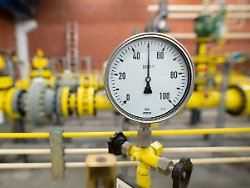Wednesday 20th October 2021
High inflation
Economists warn of the vicious price cycle
Inflation in Germany is increasing sharply. Many people fear that this will not change anytime soon. According to economists, this could set in motion a dangerous spiral.
Fear of rising prices can further fuel inflation. For economists, the phenomenon is known as the “wage-price spiral”. The question is: is this dangerous effect threatened in view of the high inflation in this country? The German Institute for Economic Research (DIW) has examined this. The result: consumer prices are currently being driven primarily by temporary effects that are likely to expire in the coming year. “Expectations are more of a threat,” said DIW economist Kerstin Bernoth.
If consumers and businesses assume that prices will continue to rise, “people will buy forward and demand higher wages. Businesses, in turn, will add their prices if they expect to have to pay higher wages and higher producer prices,” explains Bernoth . This could set in motion a classic wage-price spiral that is based less on actual structural factors than on psychological dynamics. Higher inflation expectations could then become a self-fulfilling prophecy and fuel actual inflation.
Study author Bernoth and author Gökhan Ider assume that the current sharp rise in inflation in the euro area is mainly due to one-off measures and events. As examples, they cite the withdrawal of the VAT reductions in Germany or the increase in energy prices after the slump during the Corona crisis in 2020. In addition, there are delivery bottlenecks that are currently driving up production costs. The researchers assume that inflation will remain high for several months, but will weaken as the temporary effects wear off.
Producer price higher than it has been since 1974
In September consumer prices in Germany had risen by 4.1 percent compared to the previous year, and thus more strongly than in almost 28 years. The statisticians last determined a four to the decimal point in December 1993. According to the EU statistical office Eurostat, inflation in the euro zone was 3.4 percent. To put it into perspective: inflation was low for many years. Last year the rate of price increase in Germany was 0.5 percent, compared to 1.4 percent the year before.
Against this background, the DIW points out that inflation in services, which accounts for two thirds of the core inflation rate (excluding prices for food and energy), is still below one percent in the common currency area. In addition, the classic inflation drivers, wage pressure and consumption, have so far developed moderately. The savings rate has decreased somewhat after the record high in summer 2020. According to the study, however, several factors indicate that households will not fully invest their savings in additional consumption. The billion dollar economic stimulus packages of the euro countries therefore make a moderate contribution to inflation, but only have a temporary effect.
Meanwhile, producer prices remain on the hunt for records. The prices of German manufacturers of commercial products rose in September by 14.2 percent compared to the same month last year and thus more strongly than in almost 47 years, as the Federal Statistical Office announced on Wednesday. The last time there was a bigger plus was in October 1974. These producer prices are considered to be leading indicators for the development of inflation. In the statistics, the prices are kept from the factory gate – i.e. before the products are further processed or go on sale. You can use it to give an early indication of the development of consumer prices.
